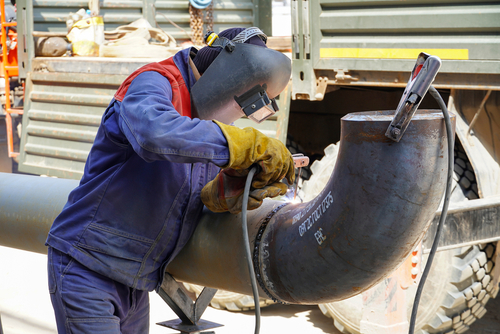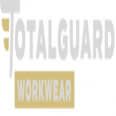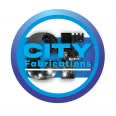Best welding specialists in Lotus Gardens, Gauteng
Top welding specialists near you
Browse the best welding experts and compare ratings and reviews.
Hire the best welding specialist
Search Uptasker for the best welding specialists
Welding – the best solution for creating strong joins in metals and thermoplastics
This might seem to be a very strong statement, but there is good reason to choose this method of joining metals and thermoplastics over other, less heat-intense techniques.
Let us start with Wikipedia’s definition of welding, which states that “Welding is a fabrication process that joins materials, usually metals or thermoplastics, by using high heat to melt the parts together and allowing them to cool, causing fusion. Welding is distinct from lower temperature metal-joining techniques such as brazing or soldering, which do not melt the base metal”.
What industries need welding specialists?
Welding is used in various industries, including the construction, automotive, marine and aerospace sectors. The automotive industry, in particular, uses thermoplastic materials in the manufacture of bumpers, fuel tanks, light clusters, inner door panels and manifolds, all of which need strong joints on relatively light-weight materials. Any industry which requires pieces of metal to be joined together or repaired will require the services of a welding specialist.
What is the difference between welding, brazing and soldering?
Welding, brazing and soldering may easily be confused by the layman as they are all concerned with the joining of metallic materials. Welding is distinct from soldering and brazing by the very fact that the base metals themselves are fused during the welding process, either on their own or with the addition of a filler material which is included in the area of the joint to form a pool of molten material called a ‘weld pool’ which, when cooled, forms a join that may be even stronger than the base metal itself. Welding joins materials which are similar in composition, and whose melting temperatures are very similar. For instance, welding aluminium and steel together is not possible as the melting point of steel is much higher than that of aluminium.
Brazing is used to join different metals
Mixed metals such as steel and aluminium can be joined through the use of brazing, in which a filler rod and brazing flux is melted into the joint, giving a strong and durable connection. The melting temperature of the filler rod must obviously be lower than that of the two metals being joined. Whilst brazing does allow for different metals to be joined together and the resulting join will be strong, it will not equal welded joins in terms of strength. Brazing temperature are usually around 450 °C.
How does soldering differ from brazing?
Soldering is used to join metals such as gold, brass, copper and silver, as well as electronics components, and is carried out at lower temperatures than those required in brazing. Whilst soldering is extremely useful in that it allows for different base metals to be joined together or to form electrical connections, the resulting joins will not be particularly strong. Solder temperatures range from 300 °C to 370 °C. Soldering flux and filler rod are used to carry out soldering work.
Welding temperatures range from 2500 °C to 6000 °C.
Welding temperatures depend on the type of welding being carried out. Arc welding is usually done at between 5000 °C to 6000 °C, whereas projection – or spot – welding is done at 2500 °C. The strength of any welded join is dependent upon the base material itself, and will produce a join which is equal in strength to or even stronger than that of the base material. Welding specialists are additionally responsible for shaping and polishing metals which have been joined together, and shoulder the responsibility of ensuring that the finished piece adheres to pre-determined assembly and safety regulations.
Are there different welding methods?
Different methods are used when welding, depending on the application. Whilst the use of heat is probably the best-known method of welding, it may be combined with pressure, or pressure alone may produce a weld. The filler materials used in welding also require a form of protection to prevent them from being contaminated or oxidised. Energy sources used for welding include a gas flame, an electric arc, lasers, electron beams, friction and ultrasound. Welding is extremely versatile in that it can be carried out in open air, underwater or even in outer space.
Different welding methods include :
- arc welding, either by hand or by machine. In this method of welding, an arc of electric current is used to combine metals using a welding rod. This is the most common method of welding.
- oxyacetylene welding. This process produces a flame in excess of 3000 °C, through the combustion of pure oxygen and acetylene, and is the only method hot enough to melt steel.
- gas welding. Propane, LPG or hydrogen gases are used where extremely high temperatures are not required, as in non-ferrous metals. They are also used for brazing and silver soldering.
- resistance welding, or electric resistance welding (ERW), a process through which metals can be joined together through the application of pressure whilst simultaneously conducting a strong electric current through the metal to heat up the welding joint to melt the metals, thereby creating a forged join. There are five different applications under this category, being :
Resistance Spot Welding. Used mainly in the automotive and aerospace industries for the joining of steel and aluminium alloys respectively. It is recognised as one the oldest and simplest forms of resistance welding. A weld nugget is produced by passing an electric current between the two metal components which are held together between electrodes.
Resistance Seam Welding. In this process, a series of overlapping weld nuggets are produced rather than just one. The advantage of this method is that a continuous welded and leak-tight seam is produced for items such as fuel tanks. It is not suitable for welding aluminium.
Resistance Projection Welding. This process concentrates electricity, force and weld time on raised projections across the surface, and is employed for welding thicker materials which may often not even be metals. The electrical, automotive and construction industries are the primary focus for this type of welding.
Resistance Butt Welding. This type of application is usually found in wires and rods with measurements up to 16mm in diameter and can be defined as “ ... a process in which the two components of the similar cross-section can be joined together in one operation that takes place simultaneously across the entirety of the object, rather than just in small spots.”
Flash Butt Welding. This is very similar to resistance butt welding, except that the energy transfer is provided primarily by the resistance heat arising from the parts themselves. This type of resistance welding is faster than the RBW. The pressure is applied to the parts to be joined, and a heavy current is then passed through the joint, burning away surface irregularities. Once sufficient heat has built up, the simultaneous application of heat and pressure connect the joints. Upon completion, no melted metal remains in the joint.
- shielded metal arc welding, also known as manual metal arc welding, flux shielded art welding or stick welding. In this type of welding, a flux covering electrode is used to join the two metal pieces together.
- submerged arc welding. In this process, a flux-covered electrode is replaced by the granular flux and a bare electrode.
- laser beam welding. Welding is carried out by a laser, which joins metal or thermoplastics. Due to the concentrated heat source of the laser beam, this method allows for narrow, deep welds and high welding rates. This method is usually used in the automotive industry.
Briefly – why are there so many different welding methods?
There are many different types of welding applications, as certain metals will require specific welding methods. Welding requires specialised training and skill. Particular care has to be taken to prevent overheating of the metals being worked on and therefore avoid distortion, warping, shrinkage or expansion. It follows that harder metals such as steel and titanium are more structurally rigid and less prone to warp, whereas softer metals such as aluminium can distort and overheat easily.
A welding specialist will know what metals can be joined together, the best methods to use and what temperatures are required to achieve a strong joint. They are able to competently handle the intense and sometimes blinding heat produced in the process, as well as keeping the gas/oxygen components safely stored. Welding itself has the potential to cause burns, electric shock, inhalation of poisonous gases and fumes, and damage to vision, so it is definitely not an activity for amateurs.
How to find the right welding specialist for your needs
Check their online ratings and customer reviews
A great deal of welding activity is carried out in the industrial, construction and manufacturing sectors. Welding specialists also work in the marine sphere where they carry out ship repairs or even operate on underwater assignments such as repairing the foundations of oil rigs, ship hulls, and other sub-surface installations. On land, they are involved in the construction and repairs of metal components on any number of structures and applications, which include pipelines, power plants, buildings, refineries, bridges, amongst others. Welding specialists may be found through the Yellow Pages, advertisements in construction, industrial and manufacturing publications and they are steadily making their presence known via the internet.
To find a welding specialist in your own geographical area, your best option would definitely be to use a search site such as Uptasker, which will give you the names and contact details of welding specialists in your location. Uptasker has the advantage as this site posts online ratings and customer reviews which give you a very quick overall picture of the service levels and applications of any particular welding specialist.
Top welding specialist tips

Always check on the problem you have before rushing into contracting a specialist in any area. Ensure that any repairs to metal and thermoplastic items - whether large or small – will be durable well into the future because of strong joints created by an appropriate welding specialist. If you are planning on joining metals (whether similar or not), and want a long-lasting bond which will not snap or break easily, choose a welding specialist who knows his craft and has a strong experience base. Before you let your well-meaning friends convince you that dissimilar metals cannot be joined together with any success, speak to a welding specialist first. Assure yourself whether your planned creation will be viable or not by consulting with specialists who actually DO know the answers – and can assist you in the task. And don’t be fooled into thinking that brazing or soldering will provide you with a strong joint which will stand up to wear and tear indefinitely. Chances are – it won’t. For more tips, see our welding specialist articles.
Read Welding articles














